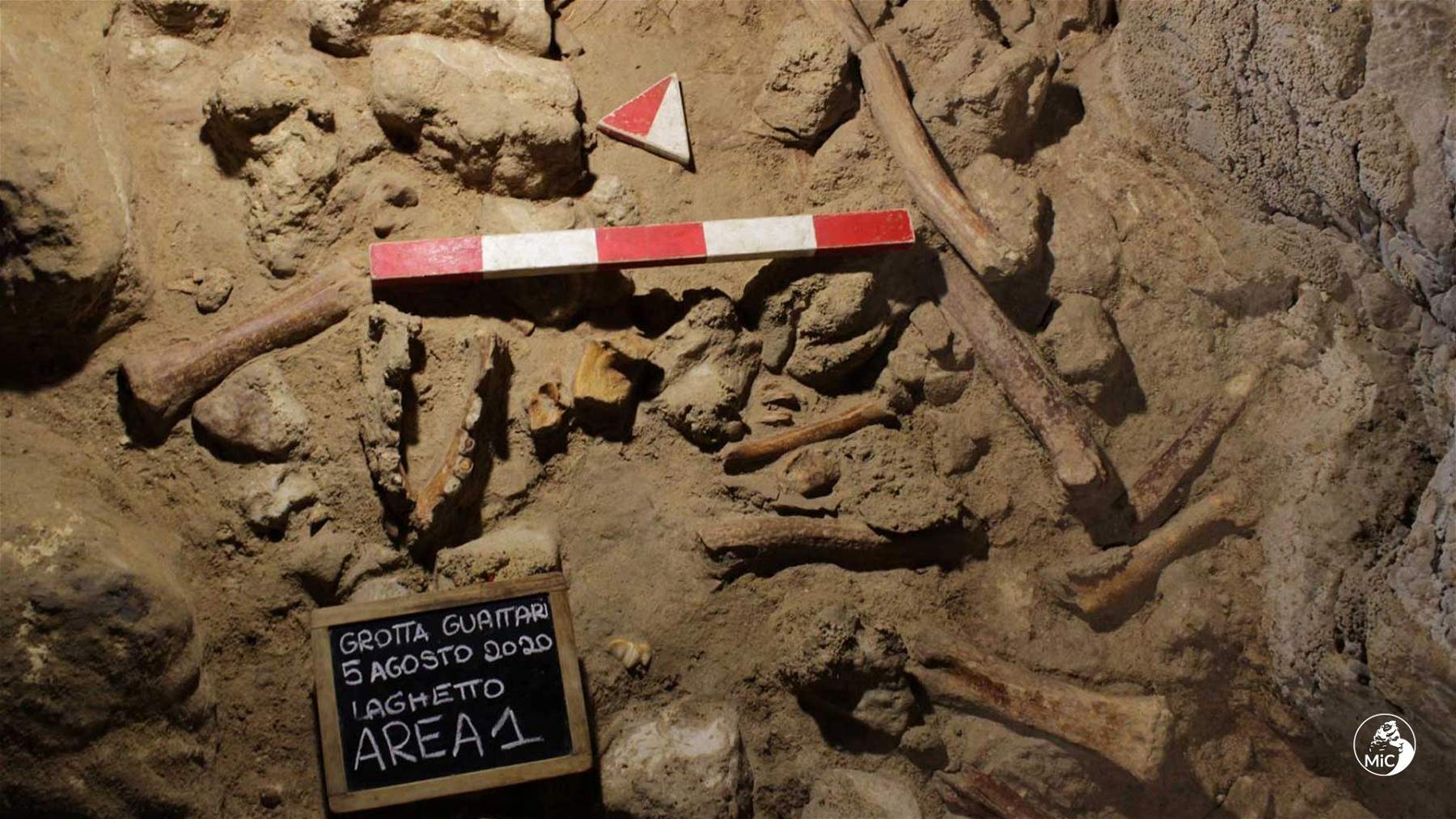Circeo, remains of nine Neanderthals found at important Grotta Guattari site
New discoveries have arrived from the Guattari Cave in San Felice Circeo, Latina, eighty years after the site was discovered. In the course of research by the Soprintendenza archeologia, belle arti e paesaggio for the provinces of Frosinone and Latina in collaboration with the University of Rome Tor Vergata, which began in October 2019, some fossil finds of nine individuals of Neanderthal man have in fact emerged: eight can be dated between 50 thousand and 68 thousand years ago and one, the oldest, can be dated between 100 thousand and 90 thousand years ago. These fossils, together with others found at the site in the past (and referable to two additional individuals), bring the total number of individuals in Guattari Cave to 11, confirming its value as one of the most significant places in the world for Neanderthal history.
In addition, recent excavations have returned thousands of animal bone remains that enrich the reconstruction of the faunal, environmental and climatic framework. In addition to abundant hyena remains, several groups of large mammals have been determined, including: the aurochs, the extinct great bovine, which turns out to be one of the prevalent species along with the noble deer; but also the remains of rhinoceros, elephant, giant deer (Megaloceros), cave bear, and wild horses. The presence of these species fits well with the age of about 50,000 years ago, when hyena dragged prey into the den using the cave as shelter and food storage. Indeed, many of the bones found show clear signs of gnawing.
The investigation is still ongoing and involves numerous scholars from several major national research organizations: INGV, CNR/IGAG, University of Pisa, and University of Rome La Sapienza. Experts are working to reconstruct the paleoecological framework of the Pontine plain between 125,000 and about 50,000 years ago, when Neanderthals frequented the Latium territory. In addition, research has focused on parts of the Cave that have never been studied, including what anthropologist Alberto Carlo Blanc called the “Little Lake” because of the presence of water in the winter months. It was in that very area that several human remains were found, including a skull cap, a fragment of occipital, skull fragments (including two hemifrontials), jaw fragments, two teeth, three partial femurs, and other fragments in the process of identification. Biological analyses and genetic research will allow reconstruction of the vegetation, climate and environment in which our ancestors lived. Isotopic analyses will allow reconstruction of the diet of the animal species examined and the ancient diet of Neanderthals.
Excavations and investigations have also been extended to the outside of the cave where stratigraphies and paleosurfaces of frequentation dating between 60,000 and 125,000 years ago have been identified that testify to the times when Neanderthals lived, the places where they were stationed and where, they lit fires and fed on their prey. In fact, the finding of charcoal and burnt animal bones authorizes the hypothesis of the presence of a structured hearth. The research that the Ministry of Culture is still conducting in the area systematically addresses all aspects of the life of Neanderthals and the Latium territory and confirms, once again, the importance of the Circeo for the knowledge of Neanderthals at the European and world level.
“With this excavation campaign,” said Mauro Rubini, director of SABAP’s anthropology service for the provinces of Frosinone and Latina, “we have found numerous individuals, a discovery that will shed important light on the peopling history of Italy. Neanderthal man is a milestone in human evolution, representing the apex of a species and the first human society we can talk about.”
“They are all adult individuals,” noted Francesco Di Mario, SABAP archaeological officer for the provinces of Frosinone and Latina and director of excavation and fruition work at Guattari Cave, “except for one perhaps in his youth. This is a satisfactory representation of a population that must have been quite large in the area. We are continuing the studies and analyses, not only genetic, with much more advanced techniques than in Blanc’s time, capable of revealing a lot of information.”
“The geological and sedimentological study of this deposit,” pointed out Mario Rolfo, professor of prehistoric archaeology at the University of Rome Tor Vergata, “will make us understand the climatic changes that occurred between 120,000 and 60,000 years ago, through the study of animal species and pollen, allowing us to reconstruct the history of the Circeo and the Pontine plain.”
Finally, Culture Minister Dario Franceschini spoke with his usual enthusiasm: “An extraordinary discovery that the whole world will talk about, because it enriches the research on Neanderthal man. It is the result of the work of our Superintendence together with universities and research institutions, truly an exceptional thing.”
 |
| Circeo, remains of nine Neanderthals found at important Grotta Guattari site |
Warning: the translation into English of the original Italian article was created using automatic tools. We undertake to review all articles, but we do not guarantee the total absence of inaccuracies in the translation due to the program. You can find the original by clicking on the ITA button. If you find any mistake,please contact us.




























